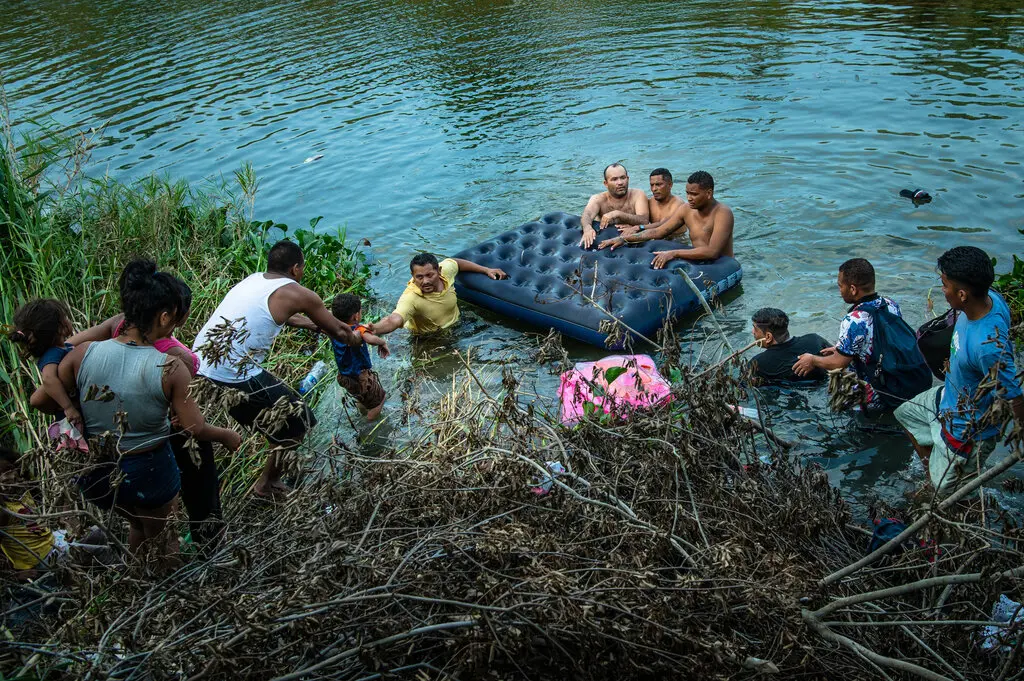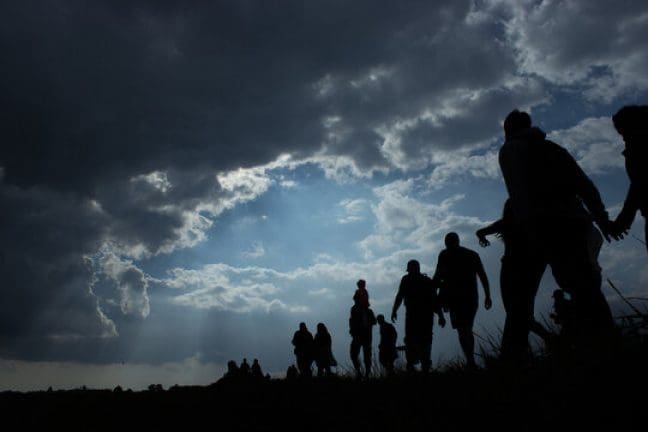After nearly two years of increased border incursions, officials say the calm will not last.

Since the lifting of a public health order that permitted the United States to promptly expel migrants at the southern border nearly two months ago, the number of migrants entering the country has not only drastically decreased, but also remained relatively low.
According to data from the Department of Homeland Security, the average daily number of illicit crossings has been approximately 3,360 since 12 May. In March 2022, the median was approximately 7,100.
The decline in border crossings is a welcome development for the Biden administration, which has witnessed record levels of illicit migration for the majority of the president’s tenure.
Officials anticipated that the expiration of Title 42, a public health regulation, would increase the number of irregular border crossings because they believed the change in policy could cause pandemonium if migrants who had previously been unable to seek asylum could now do so. However, these projections were made prior to the Biden administration’s implementation of policies designed to mitigate a prospective increase. The number of illicit crossings increased in the days preceding the rule’s expiration.
After nearly two years of higher-than-usual crossings, officials say this calm will not last. Determining the causes of migration increases and decreases is not an exact science. Global migration patterns, legal obstacles, and political shifts in the United States and in the countries from which the majority of migrants emigrate could all have an impact on the direction of the numbers. Nonetheless, the following are some informed hypotheses from government officials and outside experts based on the current state of affairs.

Why are frontier crossings declining?
Changes in border policies resulted in transient modifications to migration patterns.
Officials believe that migrants have been in a state of apprehension since May 12, when the three-year-old public health rule was repealed and policies that restrict access to asylum and create new legal pathways were implemented.
The new policies are already confronting legal challenges, creating the prospect that a judge’s decision could alter one of them, halt it temporarily, or terminate it. So many migrants are awaiting confirmation of the policies’ permanence.
Falko Ernst, a senior Mexico analyst for the International Crisis Group, stated that migrants are also observing how others fare at the U.S. border and whether they are confronting new obstacles in their endeavor to enter the United States.
Mr. Ernst stated, “You may have people waiting because they’re hearing terrifying stories” about the new policies making it more difficult to cross the border.
There are fewer illicit border crossings as a result of new entry options.
Officials believe that fewer migrants are crossing illegally because they are taking advantage of a more structured and secure option to request asylum, as well as new legal pathways created by the Biden administration for certain nationalities to enter the United States.

In central and northern Mexico, migrants can access a government program on their smartphones to request an appointment at an official U.S.-Mexico border crossing. Recent government data indicates that despite some technical issues with the app, nearly 30,000 people used it to schedule appointments in May alone.
In addition, migrants from Cuba, Haiti, Nicaragua, and Venezuela can petition for a special two-year humanitarian parole to reside and work in the United States. The Biden administration announced in April that migrants from El Salvador, Guatemala, and Honduras would be eligible to participate in a family reunification program. These programs, which are anticipated to begin this month, permit certain immigrants pursuing immediate family reunification to enter the United States and subsequently petition for a green card.
The enforcement actions at the borders of Mexico and Guatemala have made it more difficult for migrants to enter the United States.
The measures Mexico has taken include restricting migrants’ mobility within the country, making it more difficult for them to reach the U.S. border. Mexico is also transporting recently deported migrants from the United States to southern regions of the country via aircraft. This increases the distance between them and the U.S. border, making it more difficult for unlawful immigrants to attempt to cross again.
Why border crossings are anticipated to grow
The migration drivers have not changed.
Extreme poverty, violence, and political instability persist in the countries from which people are escaping, such as Haiti, Cuba, Venezuela, Nicaragua, and other Central American nations.
Migrants continue to make their journey north, albeit at a reduced rate.
Benjamine Huffman, a senior Customs and Border Protection official, stated at a June 6 congressional hearing, “I am confident that there are a large number of people moving into the hemisphere, most of whom are headed this way.” “We view the newscasts. We examine structures with occupants.”

As of June 14, there were approximately 104,000 migrants in northern Mexico, eight hours from the U.S. border, according to a recent court filing by the Biden administration. Additionally, there are more along the route from Colombia, where most journeys in the Western Hemisphere commence.
If the policies of the Biden administration remain in place and there are no adjustments as a result of legal challenges, border crossings could eventually increase again.
The possibility of violence or murder outweighs the possibility of being denied entry into the United States.
Mr. Ernst, an analyst with the International Crisis Group, stated that migrants who are waiting somewhere along their route to the United States may find the danger they face by remaining in place, particularly in Mexico, to be so significant that they would rather risk illegally crossing the southern border.
Migrants are prey for criminals and drug cartels. Mr. Ernst stated that staying in one location makes them vulnerable to coerced labor and sex exploitation.

